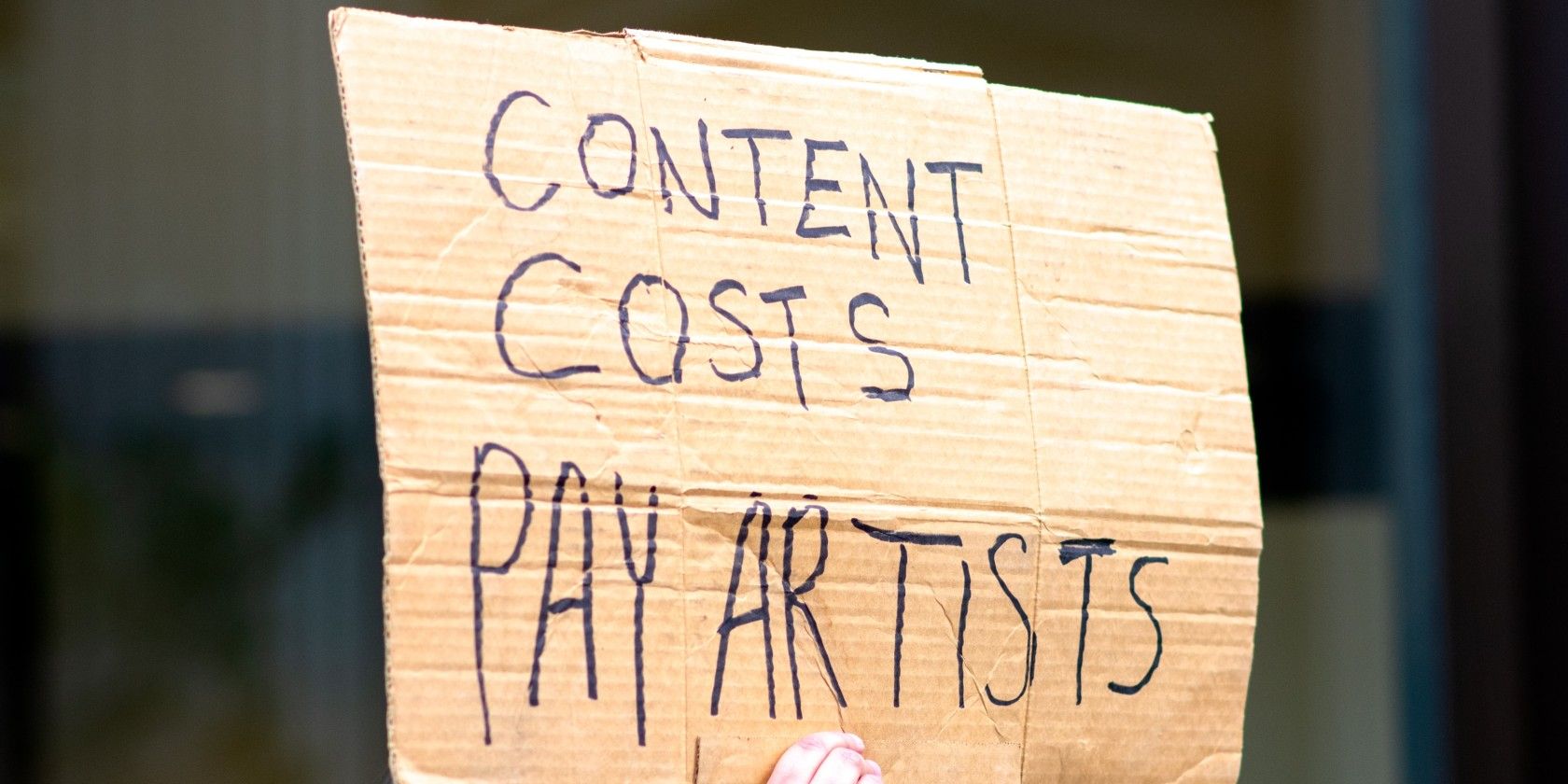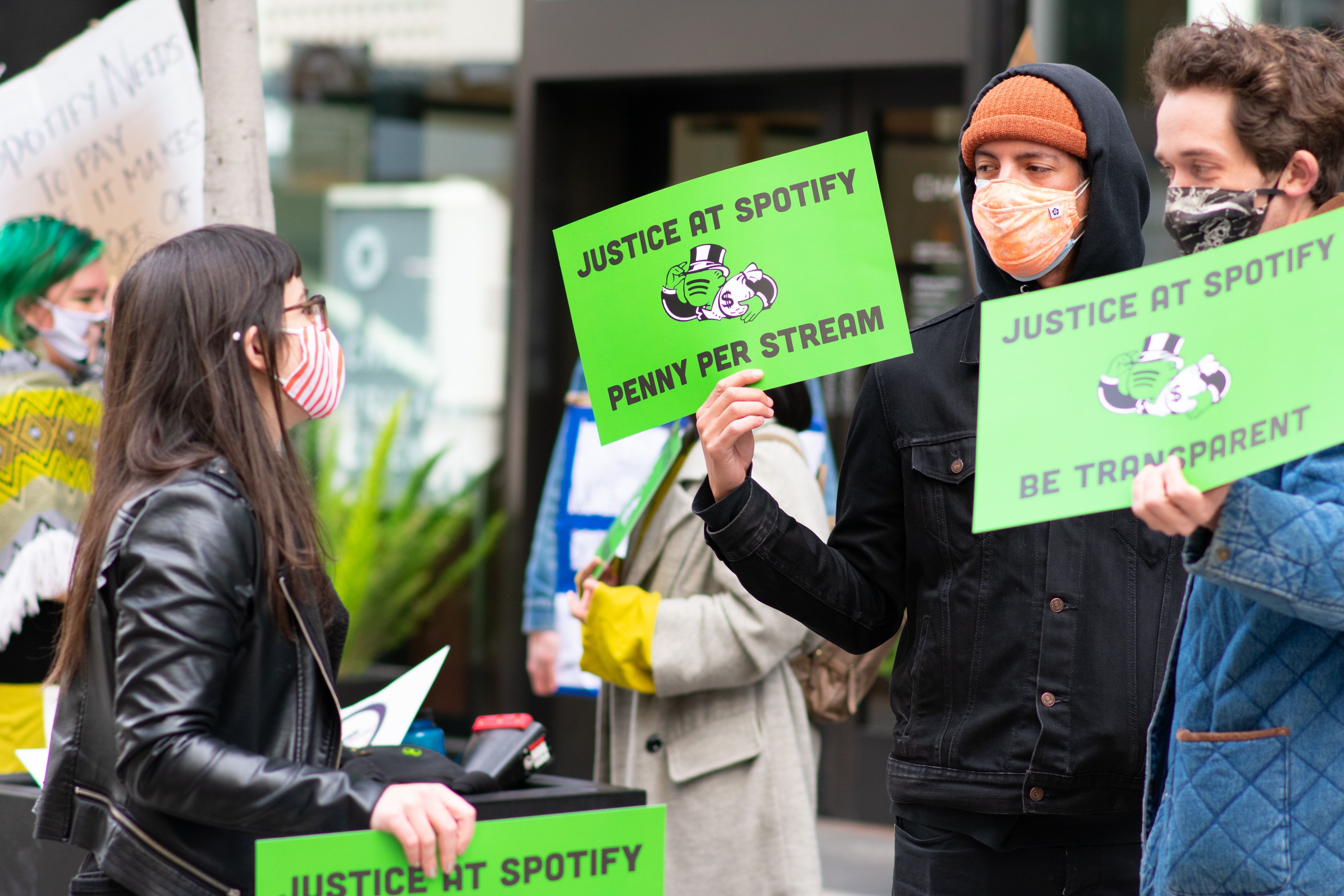Every time somebody streams an artist’s song on Apple Music, they’re paid a single cent on average. And on Spotify, the rate is much lower.
Spotify has met significant criticism for paying artists less than Apple’s average. But is the comparison missing context?
It’s essential to look at numerous areas when discussing whether music streaming services pay artists enough. Country of streaming origin, platform size, and many other things need consideration.
In this article, we’ll talk about how Apple and Music and Spotify pay artists—before discussing whether they should do more.
How Much Do Apple and Spotify Pay Artists?
In April 2021, the Wall Street Journal published an article revealing a letter it had seen from Apple. The content, sent to artists, revealed that Apple’s payment structure usually averages out to around $0.01 per stream.
Spotify also has a payment model for artists, known as streamshare. According to the WSJ article, the Stockholm-headquartered platform typically pays between $0.003 and $0.005 whenever a user plays a song.
How Revenue Is Calculated on Streaming Services
When discussing how Spotify and Apple pay artists, it’s vital to remember that not all streams pay equally.
One important thing to note from Apple’s newsletter is that the company’s $0.01 average payment is from individual plans. So, while a full-price subscription for one person counts in the price, discounted and family bundles do not.
Spotify’s streaming payment structure is also not one-size-fits-all. As the company mentions on Loud and Clear:
Every month, in each country we operate in, we calculate streamshare by adding up how many times music owned or controlled by a particular rights holder was streamed and dividing it by the total number of streams in that market.
So if an artist received one in every 1,000 streams in Mexico on Spotify, they would receive one of every $1,000 paid to rights holders from the Mexican royalty pool. That total royalty pool for each country is based on the subscription and music advertising revenues in that market.
Pay particular attention to “based on the subscription and advertising revenues in that market”. In countries where Spotify costs less, artists need more streams to make the same as fewer streams in more expensive ones would.
iGroove revealed in July 2020 how much Spotify music subscriptions cost around the world and the average pay per stream in featured countries. One million song plays in Norway, where Spotify Premium costs $12.01 per month, would generate $5,479.27.
But in Argentina, where the same package costs $1.94, one million streams would generate just $850.04.
Where Does the Money From Streaming Go?
In most cases, money made from streaming services does not all go directly to the artists. Apple’s letter, for example, pointed out that $0.52 from every $1 earned went to record labels. The company keeps the remaining percentage.
Meanwhile, in a video titled How The Money Flows, Spotify pointed out that artists and songwriters aren’t paid directly. Instead, the money goes to “rights-holders”—which could be labels, distributors, aggregators, or collecting societies.
Spotify pays these rights holders around two-thirds of every dollar earned. The money that does not go to rights holders is directed towards publishers.
Once the money leaves Apple or Spotify, the rights holders decide how the money is divided. Non-independent artists will usually have an agreement with the rights holder.
Do Apple and Spotify Pay Enough for Streaming?
When it comes to the perception that Spotify pays less, context is essential. Firstly, Spotify has more users than Apple Music. While the company pays less per stream than Apple, users also play songs on the platform much more frequently.
Also worth considering is the importance of streaming services in the music ecosystem. Before the dominance of Spotify and other platforms, piracy in the music industry was a bigger problem. You only need to look back to how people used the likes of LimeWire to avoid paying for songs on iTunes or physical albums in real life.
But the conversation goes beyond streaming platforms alone. Both Apple and Spotify have made it clear that they do not pay artists directly. So, some responsibility lies in artists thinking carefully before committing to any record label deal.
In particular, looking for any hidden royalty deductions and the overall royalty rate are both important. If neither seems fair, either renegotiating or not signing an agreement are the next steps worth considering.
Streaming Royalties: A Hot and Important Topic
Whether music streaming services pay artists enough is an essential conversation for the music industry. But blaming the likes of Apple and Spotify alone is deflecting some of the responsibility.
The companies have revealed how they divide their money and noted that they’re powerless once it leaves their hands. You don’t need to go far on the internet to find record label horror stories, and considering royalty agreements is vital before artists sign a contract.
Beyond Apple and Spotify, offering better education to artists—and red flags they should look out for—are essential for avoiding exploitation.


